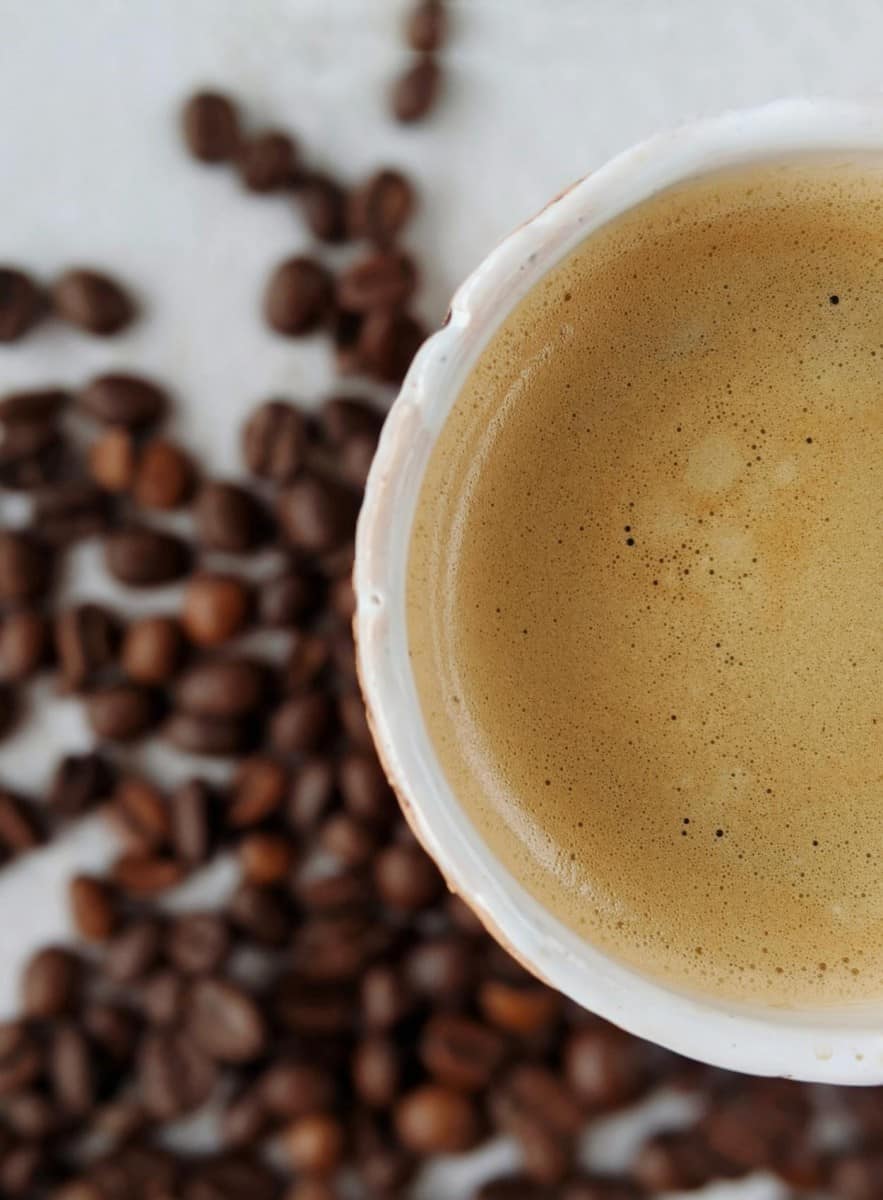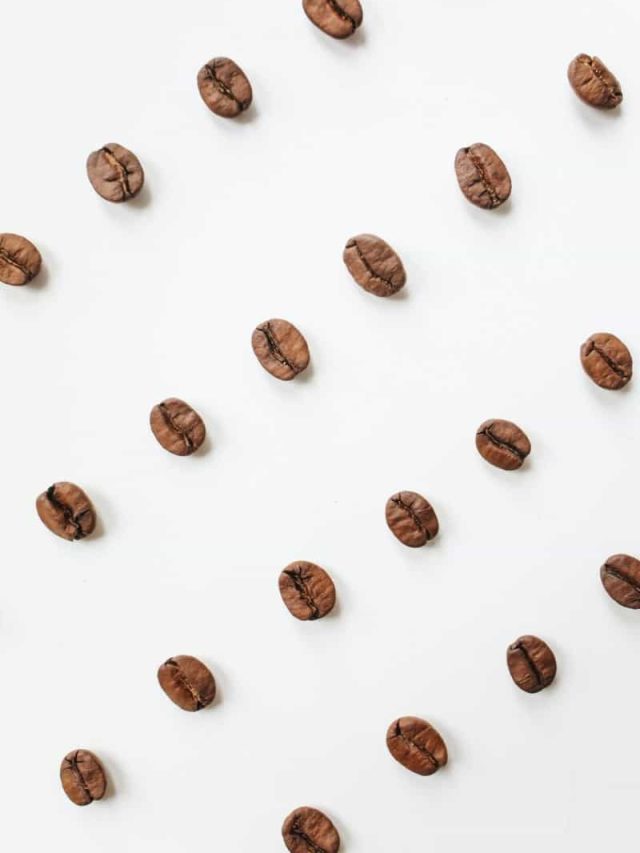Coffee is part of our daily routine. It is the first thought that comes into our mind after we wake up or whenever we need to refresh our mood. But have you ever thought about what contents coffee has?
Coffee contains a perfect mixture of chemical compounds: caffeine, tannin, fixed oil proteins, and carbohydrates. However, when it comes to tannins, many questions usually arise on whether they are good or bad for your health.
Coffee does contain tannins, specifically the chemical compound chlorogenic acid. However, there is no exact definition of tannin so it’s hard to chemically test coffee beans for it. Still, it is estimated that coffee’s tannin content only reaches about half of the tannin content of tea leaves.
Tannin is the astringent content present in coffee that adds a bitter flavor to coffee. The exact amount and contribution of tannin in coffee are still unclear and a complex discussion despite using modern techniques to analyze the role of tannin in coffee.
Tannins are not only present in coffee but are natural compounds that can be found among:
- Nuts
- Fruits
- Seeds
- Herbs
- Spices
- Tree bark
- Legumes
- Wine
The exciting fact about tannin is, its name came from the leather industry. Tannin is used to darken the leather skin or animal skin to make them more durable. And yes, you guessed it right! The dark, beautiful color and mouth-drying taste of coffee come from tannins.
Moreover, Tannin-rich compounds such as coffee have many potential benefits, like prevention of cancer and fighting cardiovascular diseases. However, there are also adverse side effects of tannins on the body.
Continue to read on to find everything you need to know about complex tannins in your coffee.
Are Tannins in Coffee Bad?

In general, tannins in coffee are natural components that are not bad for one’s health, though tannin-rich food and drinks do have some side effects.
Because tannin easily binds with other compounds such as protein, It hinders the digestive process of food nutrition and iron into the body.
Let’s look into some side effects of tannins.
Decreases Iron Absorption
Daily consumption of coffee reduces iron absorption by 50%, which is called iron deficiency anemia.
| Tannin in Coffee (mg) | Iron-deficiency anemia (decrease in the ability to absorb iron) |
| 5mg | 20% |
| 25mg | 67% |
| 100mg | 88% |
Studies support tannin-rich food intake that causes a reduction in iron absorption. People who consume daily coffee should take some iron supplements. Consulting your doctor and taking iron supplements can save you from potential health dangers caused by iron deficiency.
Tannin Can Cause Nausea
People who have sensitive digestive systems should not take their coffee with an empty stomach, as it can lead to nausea.
To avoid this, try eating some food before you have your morning coffee. The nutrients, including carbs and proteins you get from food, will combine with tannins and decrease the tannins’ ability to disturb your digestive tract.
Reduce the Growth Rate
Food and beverages that are enriched with tannin are considered low in nutrients. Tannin doesn’t have the efficiency in absorbing proper nutrients.
Moreover, tannin decreases the mutagenic activity of mutagens which can harm the body and cause various diseases.
Are there Any Healthy Benefits of Tannin in Coffee?
Tannins in coffee have several health benefits as they are polyphenol molecules that provide antioxidant and antimicrobial advantages. They hinder the growth of yeast, bacteria, fungi, and viruses. It is also proven to have reduced blood pressure.
Tannins in coffee do have some health benefits, depending on dosage and kind.
Accelerate Blood Clotting
Having a cup of coffee after the extraction of a tooth can help stop bleeding. Sounds nice, right?
Studies have found that tannin, along with the caffeine in coffee, accelerates blood clotting, and can help treat gum bleeding.
Epigallocatechin Gallate
Epigallocatechin Gallate (EGCG) is one of the beneficial tannins components found in coffee.
Studies have suggested that EGCG decreases inflammation and protects against chronic illnesses and cellular system damage.
Hence, taking tannin-containing food can help prevent heart or cancer disease. EGCG is found in tea as well and is known for many health benefits.
Theaflavins and Thearubigins
Two groups of tannin, theaflavins, and thearubigins are also found in coffee and tea simultaneously, wherein tea contains a high level of these particles.
Theaflavins and thearubigins tannins work as potent antioxidants and protect from damage caused by free radicals.
In short, tannins do have health benefits, as well as potential side effects on health. More studies are needed to understand the tannin role in coffee clearly. As long as you consume coffee in a reasonable manner, the negative effects of tannins shouldn’t worry you too much.
Do Tannins in Coffee Cause Dry Mouth?
Tannins in coffee can cause dry mouth as they are natural compounds called polyphenols and these tiny molecules bind with protein and minerals. Saliva contains proteins, and that’s why tannins get combined with salivary glands. Hence, saliva glands are unable to produce saliva which causes your mouth to go dry.
You often feel the mouth-drying effect after sipping on a cup of coffee, and this is because of tannins. I suggest while drinking coffee, you counter that effect by drinking a glass of water.
Drinking water before or after coffee can also prevent dehydration.
Why Do Tannins Yellow the teeth?
Tannins in coffee can yellow the teeth because they precipitate layers of tannin protein that stick on the teeth surface that causes the stain on your teeth.
Specialists agree that one of the bad sides of drinking coffee is that you end up with yellow stains on your teeth. As we know, tannin combines with most of the proteins that make complex tannin proteins precipitate.

People who consume a lot of coffee and other tannin beverages such as tea and wine, mostly have yellow teeth.
How to Prevent Tannin in Coffee from Staining Your Teeth?
To prevent tannin from staining your teeth, make sure to thoroughly brush your teeth after every cup of coffee, tea, or tannin-rich food. Some coffee has less amount of tannin compared to others.
A nice brew and proper steep coffee usually have less amount of tannin compared to over-extract tea.
Drinking coffee with straw also reduces the contact between coffee and teeth, and less contact means less staining.
Which Has More Tannins: Coffee or Tea?
Generally, coffee and tea both contain tannins, however, tea leaves are more enriched with tannins than coffee. However, the amount differs depending on how both beverages are produced.
Tannin in coffee and tea has health benefits, as well as some potential side effects. You can’t tell the exact amount of tannin in coffee or tea.
Though study results show that coffee contains around 4.6% tannin while tea has 11.2% tannin.
Another study shows that tea has significantly more tannin content than coffee. Where roasted coffee has up to 1.8% tannin, tea has around 3.7% tannin content.
Moreover, color and taste give an idea about the amount of tannin in a coffee or tea. Tannin-rich coffee and teas are primarily dark in color, tangy, dark, and bitter.
Looking at the big picture rather than only at tannin side effects, you can see many health benefits of drinking coffee in moderation. However, tea lovers should be more concerned about the effects of tannin.
Coffee or tea: you can enjoy your favorite cup of happiness as long as you don’t go overboard with your daily intake
Remember that any type of drink or food can be unhealthy for you if you overconsume it. The key is moderation!
Some other tannin-rich foods are:
- Tea Leaves.
- Nuts (with skins)
- Dark Chocolate.
- Cinnamon
- Clove.
- Grapes
- Pomegranates
- Quince.
- Red Beans.
How Do You Remove Tannins From Coffee?

You can remove tannins from coffee by changing your brewing method. Try cold brewing to reduce the extraction of acids from coffee. Trust me, it’ll taste less bitter.
Use Aeropress instead of french press because Aeropress doesn’t over-extract your coffee.
You can also opt for light or medium roast coffees as they contain a low amount of tannins.
Suppose you want to remove the bitter taste of coffee that is caused by tannin, go with wet-processed and dry-processed methods. They add different flavors to your coffee which are less bitter as well.
Dry processed coffee methods include sweet cascara fruit flesh that is used for drying onto the coffee beans and adds a sweet fruity flavor to your coffee.
Another way to remove the tannin itself from your coffee is by extracting the coffee in the right way.
To extract your coffee the right way, follow these steps:
1. Right water usage
There is a term used for particles which is per million ppm. Most filtered water doesn’t have enough ppm, which causes your coffee to over-strip and give an unpleasant bitter flavor.
The right amount of ppm for water is 225. You can set water ppm right by adding barista packets in your filtered water.
2. Fine grind
Make sure the grind is fine, which creates a large surface area to contact with water. This way, coffee has more area to pull out.
3. Brew time
Water has enough time to get in contact with the coffee and long-brewing can bitter the taste of coffee
4. Under Roasted Coffee
Use coffee that is appropriately roasted. If coffee is under roasted, that means it did not pull out tannin particles completely.
Do All Coffee Have Tannins?

Not all coffee has tannins as the tannin amount in coffee mostly depends on the production method and how long it takes to steep and brew.
Coffee that has more oxidation processes is higher in tannins. Similarly, coffee that is under-roasted and over-extracted has more tannin components.
Look into these four things that can help you find whether the coffee is high in tannin or low:
- How are coffee beans processed?
- Is it under roasted?
- Color of the brew?
- The mouthfeel of coffee: is it dry or watery?
You cannot get the exact amount of tannin, but you’ll get a rough idea.
Bottom Line
So, it turns out that coffee does have tannins. However, tannins are not that bad for health, the pros far outweigh the cons. You can either opt for a less tannin coffee option because many coffee brands are available that contain fewer tannins. Also, you can learn how to steep coffee the right way to reduce the tannin amount in coffee as much as possible.
You can also add milk to avoid the bitter taste that occurs because of tannin in coffee.
Watch this video to find out more about how to steep coffee the right way.
Other Articles
- Sugar in Coffee: Yay or Nay? (Find Out!)
- Health Benefits of Coffee: Reasons Why Coffee is Good for You
- Is Coffee Poisonous? (Shocking Revelation)
Contents
- 1 Are Tannins in Coffee Bad?
- 2 Are there Any Healthy Benefits of Tannin in Coffee?
- 3 Do Tannins in Coffee Cause Dry Mouth?
- 4 Why Do Tannins Yellow the teeth?
- 5 How to Prevent Tannin in Coffee from Staining Your Teeth?
- 6 Which Has More Tannins: Coffee or Tea?
- 7 How Do You Remove Tannins From Coffee?
- 8 Do All Coffee Have Tannins?
- 9 Bottom Line
- 10 Other Articles


